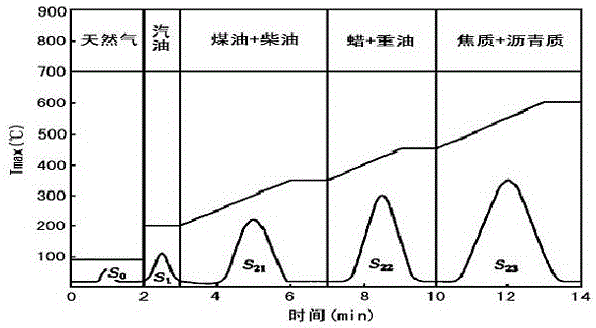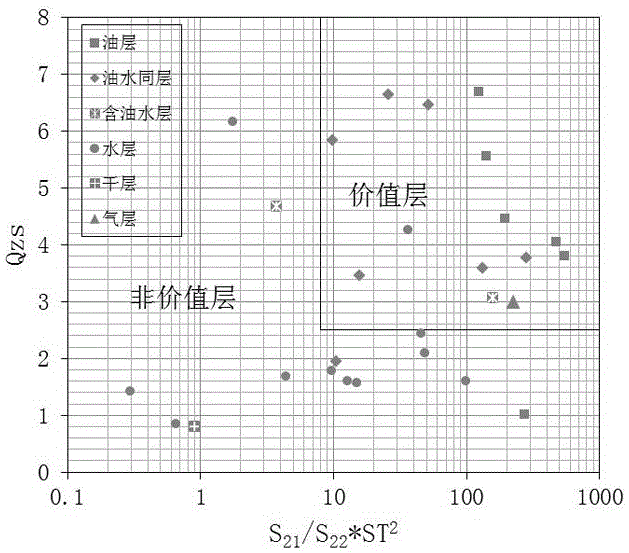Igneous rock well logging multi-factor interpretion method
An igneous rock, multi-factor technology, applied in the field of logging interpretation, which can solve problems such as the difficulty of logging interpretation
- Summary
- Abstract
- Description
- Claims
- Application Information
AI Technical Summary
Problems solved by technology
Method used
Image
Examples
Embodiment 1
[0025] Embodiment 1: as attached figure 1 As shown, a multi-factor interpretation method for igneous rock logging, including the following steps:
[0026] Step 1: Establish an igneous rock logging interpretation database, collect and organize gas logging related parameters, oil testing related parameters, and rock pyrolysis related parameters through integrated mud logging equipment and manual acquisition, and optimize and classify the parameters to form mud logging interpret the database;
[0027] Step 2: Extract gas logging sensitive parameters and rock pyrolysis sensitive parameters, and derive gas logging sensitive parameters and rock pyrolysis sensitive parameters related to the evaluation of oil and gas properties of igneous rock reservoirs from the mud logging interpretation database;
[0028] Step 3: According to the regional geological characteristics, reservoir types, gas logging sensitive parameters and rock pyrolysis sensitive parameters, select interpretation and...
Embodiment 2
[0040] Embodiment 2: as attached image 3 , attached Figure 4 , attached Figure 5 , table 1, table 2, shown in table 3, this igneous rock logging multi-factor interpretation method comprises the following steps:
[0041] Step 1: Establish the gas logging oiliness index (Qzs) model of igneous rock reservoirs, the calculation formula is:
[0042] Qzs=Uh×C3 / C4×Ln(2-1 / Fjb)×eK
[0043] In the formula, Qzs: gas oiliness index; Fjb: ratio of total hydrocarbon peak value to base value in the abnormal display section of gas measurement; Uh: hydrocarbon phase coefficient; Nc: hydrocarbon peak coefficient; K: after fitting by gas measurement component index Obtained, reflecting the decline rate of hydrocarbon components; b: obtained by gas-tested component index fitting, positively correlated with gas-tested total hydrocarbon content, reflecting oil (gas) abundance, e: a constant, the value is about 2.71828;
[0044] Step 2: Use the chromatograph that comes with the comprehensive m...
PUM
 Login to View More
Login to View More Abstract
Description
Claims
Application Information
 Login to View More
Login to View More - R&D
- Intellectual Property
- Life Sciences
- Materials
- Tech Scout
- Unparalleled Data Quality
- Higher Quality Content
- 60% Fewer Hallucinations
Browse by: Latest US Patents, China's latest patents, Technical Efficacy Thesaurus, Application Domain, Technology Topic, Popular Technical Reports.
© 2025 PatSnap. All rights reserved.Legal|Privacy policy|Modern Slavery Act Transparency Statement|Sitemap|About US| Contact US: help@patsnap.com



